INTERSECTIONS IN SOUTH AFRICA
how to answer diagrams
To answer diagrams,firstly you need to identify the vehicle with right of way and the intersection. Below are the intersections you need to know and there differences
- CROSS JUNCTION a cross junction is whereby 2 roads are crossing each other. At a cross junction you can not have cars getting into the junction from all the roads and still come up with a car with the right of way.
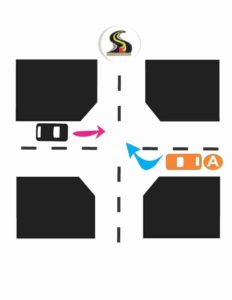
2) T- JUNCTION OR SIDE ROAD JUNCTION…this is an intersection where we have one road joining a straight road, below is an example, with this intersection we can have vehicles from all the roads and still come up with a car with the right of way (car B) which is very important when answering diagrams
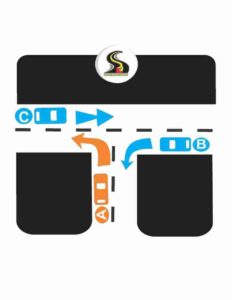
3) Y-JUNCTION …. this is an intersection where we have 3 roads meeting at one point,noone has an advantage over the other,meaning if we have cars from all the roads it means no one will move first because all cars will be having a car on the right. Below is an example

rules of diagrams
(i)never turn right infont of an oncoming vehicle
EXPLANATION: on the diagram below car A (brown) cannot turn right infront of car black same with car black it cannot also turn right infront of brown. oncoming cars are cars facing each other

(ii)Always give way to vehicles coming from your right
EXPLANATION:On the diagram below car C gives way to car B and car B gives way to car A. Which means car A has the right of way
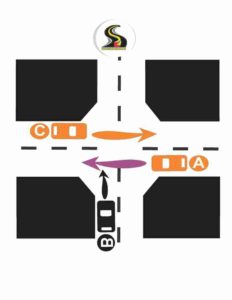
(iii) At a round about always give way to cars that are already in the circle
EXPLANATION: On the diagram below car B is already in the circle, which means it will be the first to leave
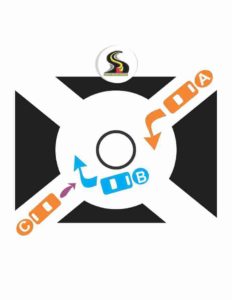
(iv)A vehicle facing a control sign( stop sign or line, give way sign or line) must obey and be the last car to leave the intersection
EXPLANATION: On the diagram below car B is facing a stop sign, which means will be the last car to leave the intersection
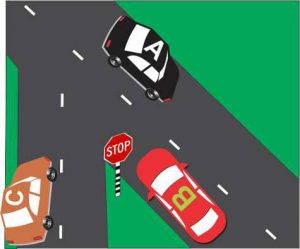
Above were the 4 rules we use to answer diagrams,and as we continue to make is easy for all of us to understand diagram, there are also things you need to note when answering diagrams.
1) A vehicle without a car on the right, has the right of way and therefore moves first
2)A vehicle which moves doesn’t mean goes first ie when the vehicle with right of way is turning right it moves first but does not go first
3) On a diagram with 2 vehicles the vehicle with the right of way moves and goes first unlike on a diagram with three vehicles, a car with the right of way moves first but may not go first ie when turn right
4) The direction of the vehicle with the right of way determines the sequence for the rest of the car on a diagram. These are the reasons why we say so
OUR CONCLUSION TO DIAGRAMS
After going through and consider all the rules above as Safety Driver Training we then arrived to conclusions below
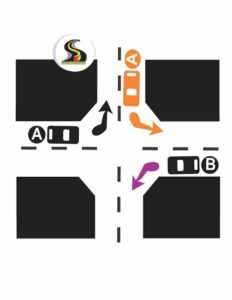
- Explanation to the above diagram, If the right of way car is turning to the left( car A black)it goes first,side car second (car A brown) and the oncoming car goes last(car b )

2)Explanation to the above diagram, If the right of way car is going straight (car A) it goes first , oncoming goes second(car C) and side car goes last (car B)
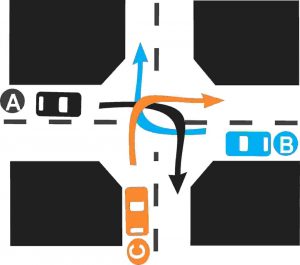
3) Explanation to the above diagram : If the right of way car of way car is turning right goes second (car B),oncoming first (car A )and side car goes last car (car C)
